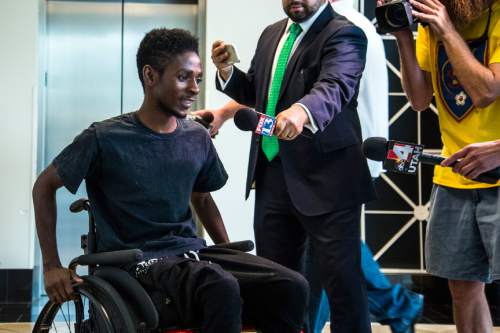This is an archived article that was published on sltrib.com in 2016, and information in the article may be outdated. It is provided only for personal research purposes and may not be reprinted.
Two different groups of investigators have now looked into the events surrounding the shooting by Salt Lake City police officers of a young crime suspect in February. And they have come to different conclusions.
The split decision in this matter only strengthens the argument that the police video of the incident should be released to the public as soon as possible, so that the public as a whole can reach the most informed decision possible as to whether the officers in particular, and the criminal justice system in general, have served the public interest as well as they can.
In this case, also, it is important to recognize that Salt Lake County District Attorney Sim Gill was looking for one thing and the Salt Lake City Police Civilian Review Board was looking for another.
The D.A., by law, was to determine whether the shooting of then-17-year-old Abdullahi "Abdi" Mohamed was within the legal definition of being "justified" shooting or whether the two officers involved acted recklessly or even illegally.
He concluded that they acted with justification and had not broken the law. He also charged Mohamed with aggravated robbery, a first-degree felony, and drug possession with intent to distribute, a second-degree felony.
The review board, on the other hand, has a different, more exacting, measuring stick. It is charged with determining whether the shooting met department policy — which, one would hope, is more exacting than just not being criminal. And it found that they had fallen short of that standard.
The point is to determine whether officers involved acted with levels of restraint and judgment called for by department policy. Those findings, together with the department's own examination, should be applied to the drafting of future standards for police and to the education and training of officers.
The D.A. and the review board came to several similar conclusions, specifically that the officers involved did not have a lot of time to size up the situation, that it was dark and hard to see what was happening and that the officers had reason to believe that the life of another person, allegedly at that moment being attacked by Mohamed, was in danger.
But, even in granting the difficulty of the situation, the review board was not satisfied that the officers had exhausted all other, non-lethal options before firing their guns.
All of these findings and opinions should, and almost certainly will, be taken to heart as Salt Lake City police continue to design, and train their officers to implement, a system of less-deadly conflict resolution.



